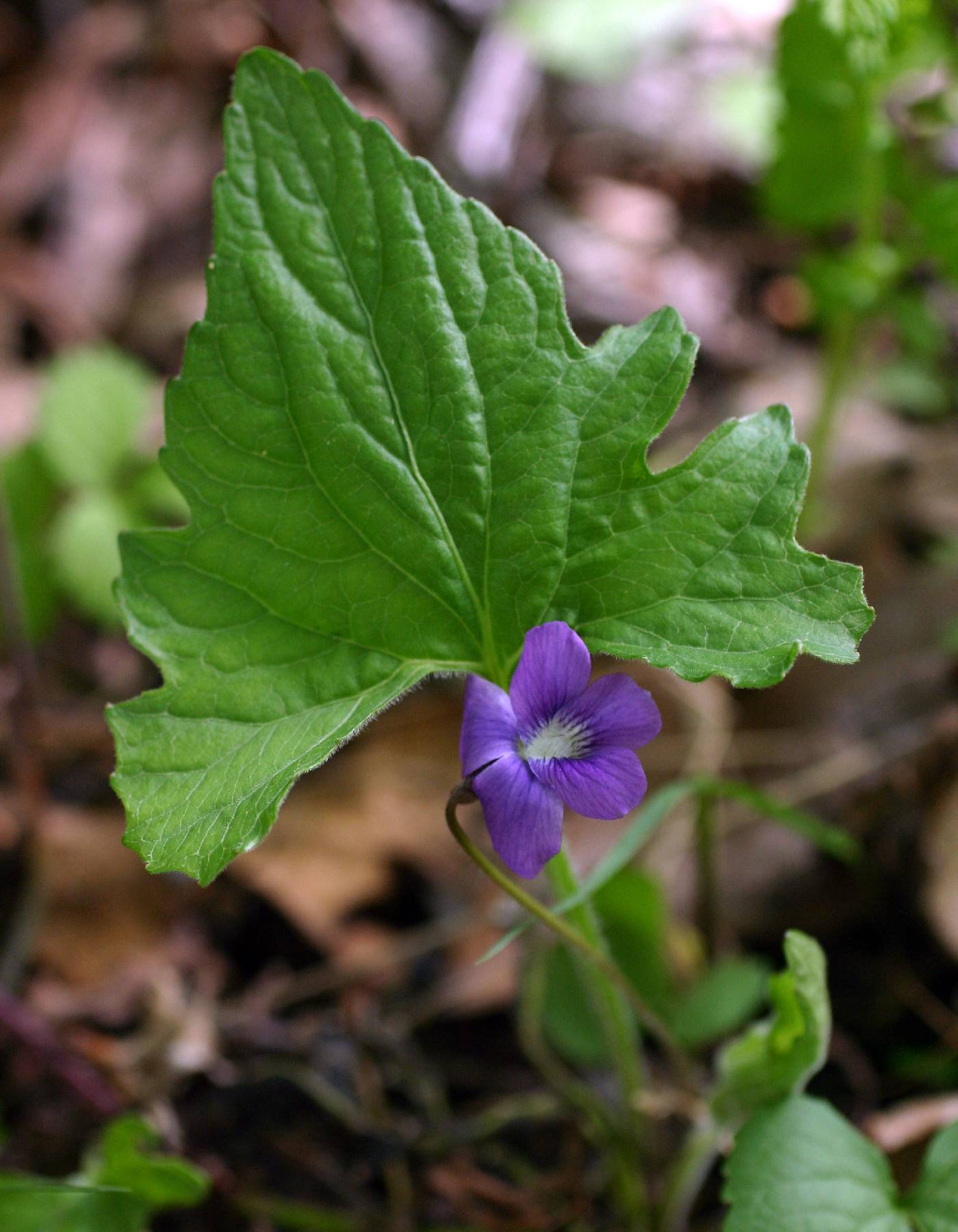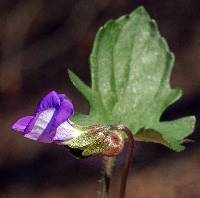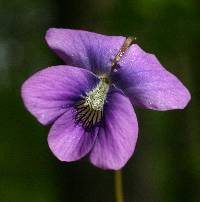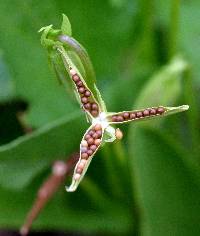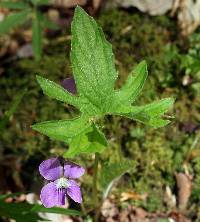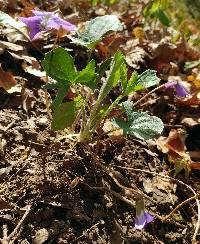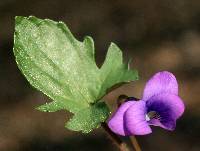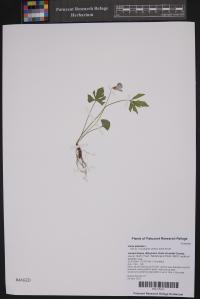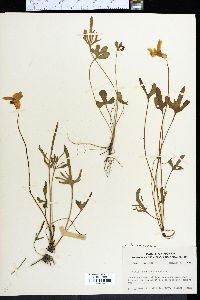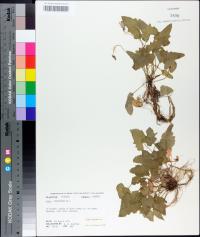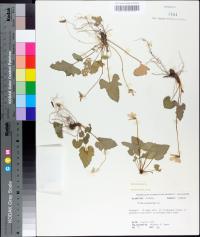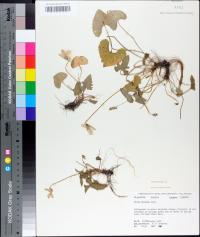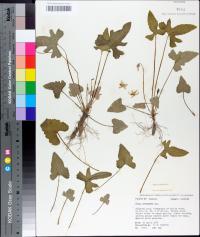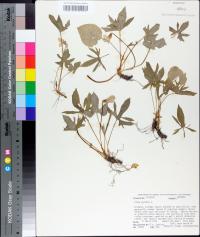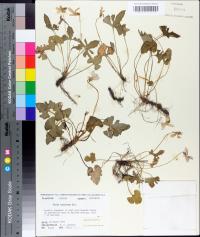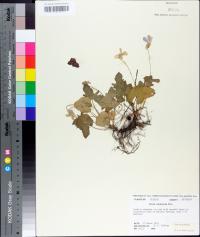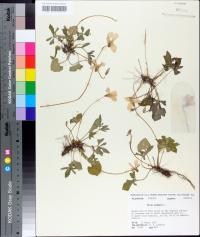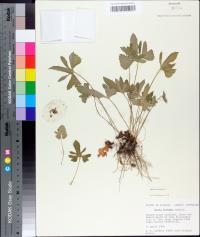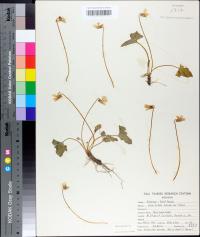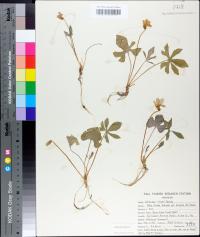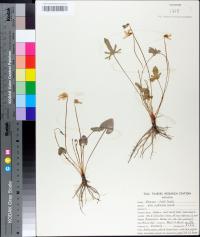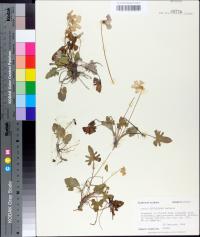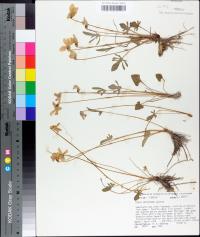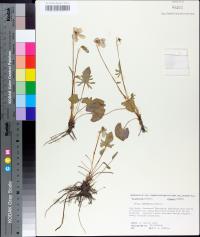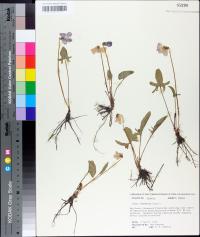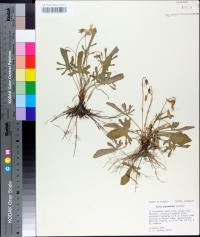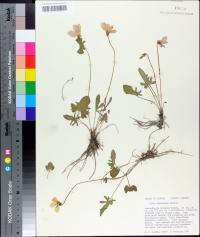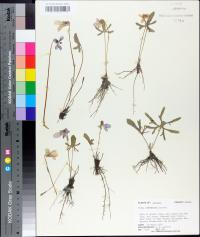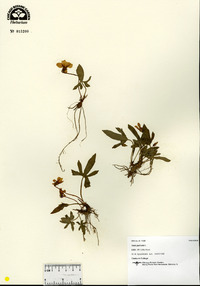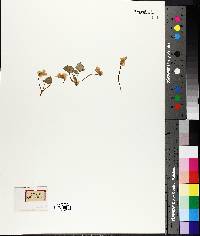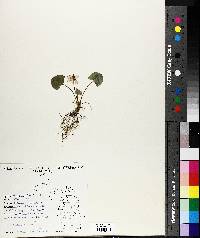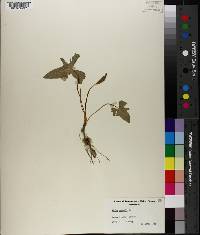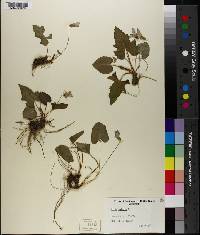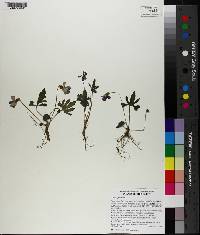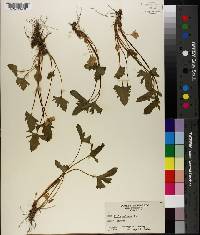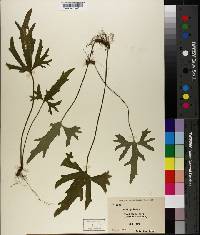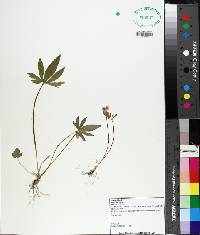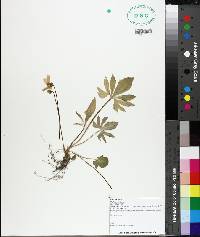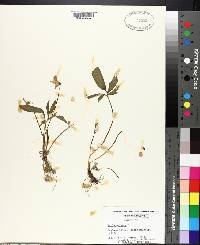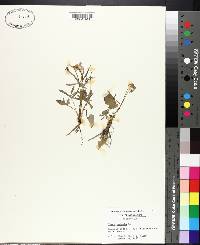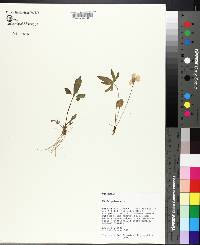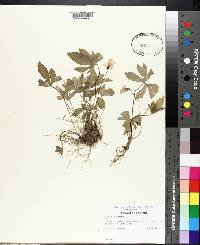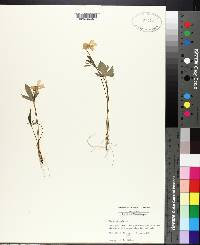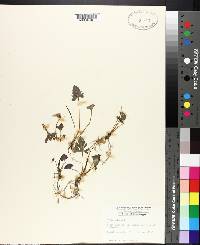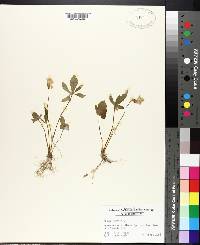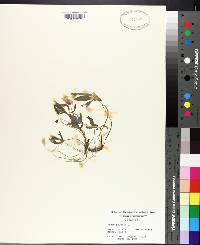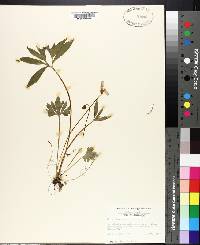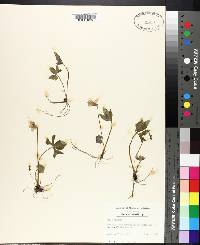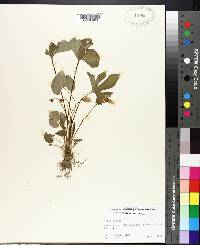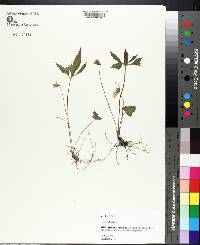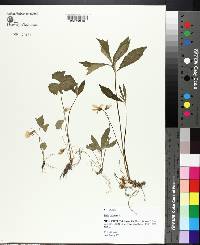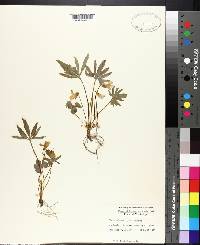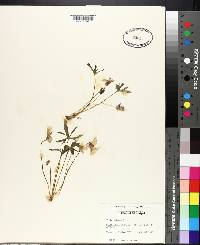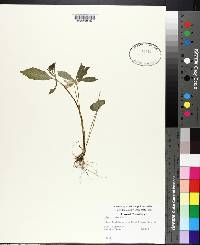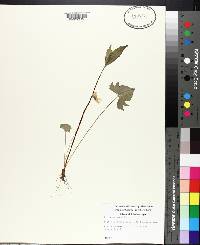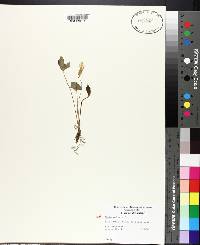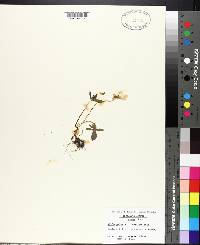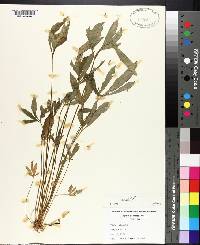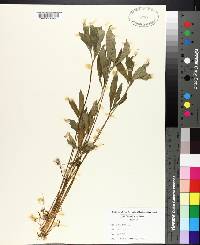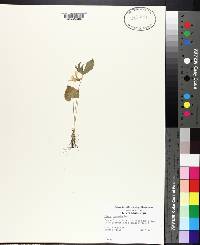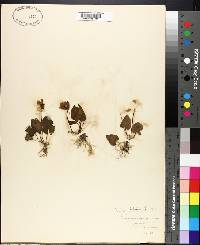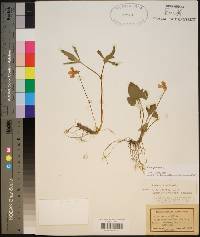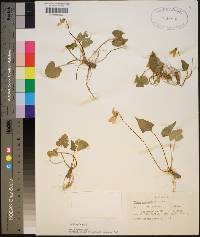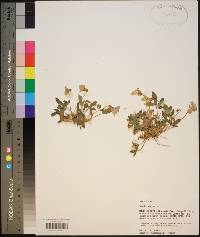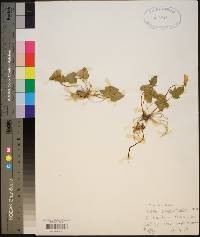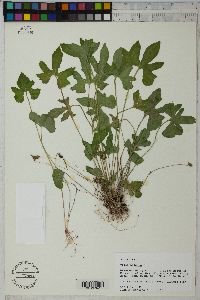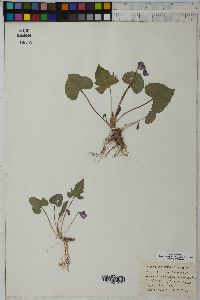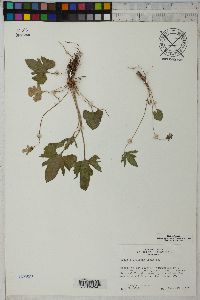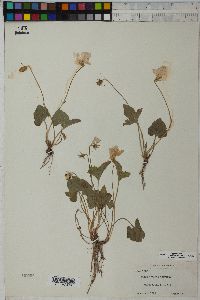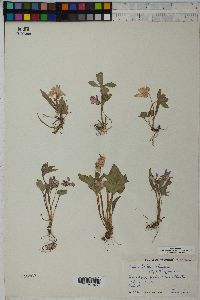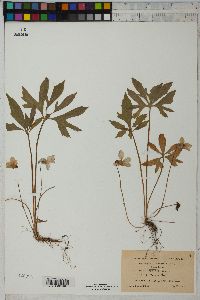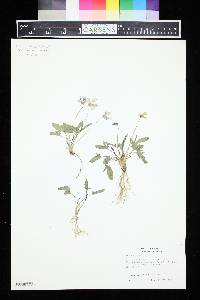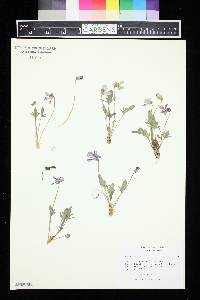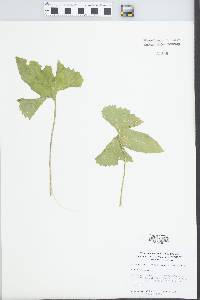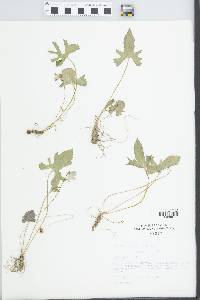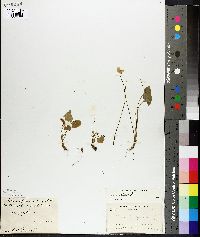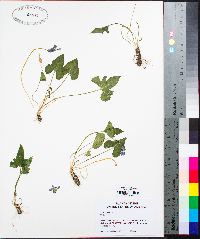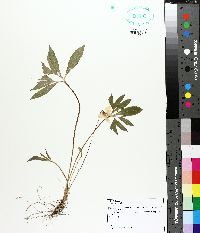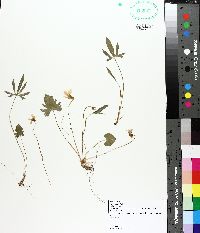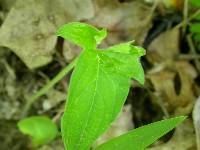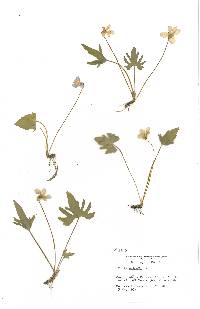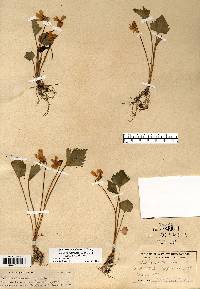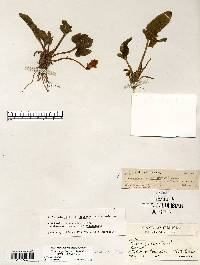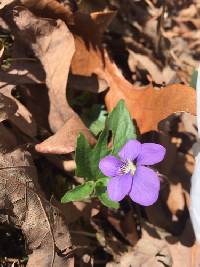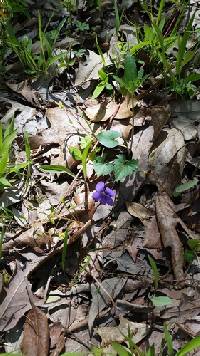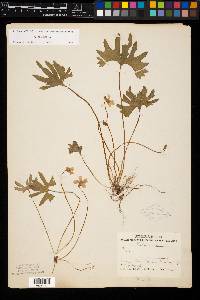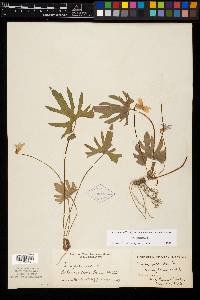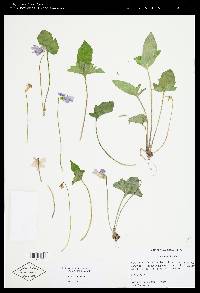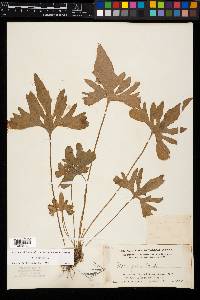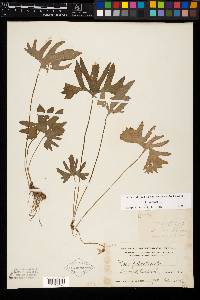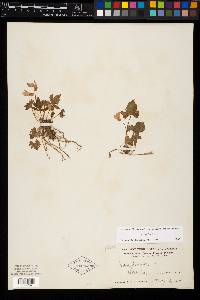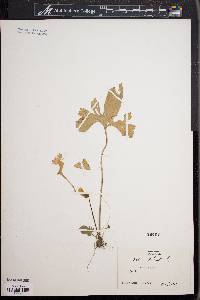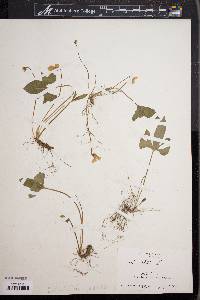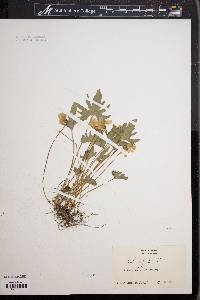Viola palmata
|
|
|
|
Family: Violaceae
Three-Lobe Violet
[Viola palmata var. esculenta Elliott ex D.B. Ward, moreViola x palmata L. (pro sp.) [brittoniana or pedatifida × affinis or sororia]] |
Perennial herb 7 - 20 cm tall Stem: absent aboveground, leaves and flowers arising independently and directly from a rootstock of thick (much greater than 3 mm diameter), prostrate or ascending rhizomes, but lacking runners (stolons). Leaves: basal, erect, long-stalked, often somewhat toothed, long-hairy, under one and a half times longer than wide, kidney-shaped and coarsely toothed when young, but older leaves coarsely three-lobed. The three main leaf lobes are triangular and broadly egg-shaped (never linear), and while the lateral sections are sometimes further lobed, the terminal section is always unlobed. Leaf stalks long-hairy and separate from the green, less than 1.5 cm long stipules. Flowers: stalked, blue-violet, about 1 - 2 cm long, bilaterally symmetric with two upper petals, two lateral petals, and lower petal with base modified into a rounded nectar spur. In the summer, producing very fertile flowers that do not open (cleistogamous). Sepals: five, green, under 1 cm long, oblong with blunt or rounded tips and ear-like appendages (auricles) at the base. Petals: five, separate, all differently shaped, but all forward-facing, and much longer than sepals. The two lateral petals often have a beard of hairs near the base, while the lowest petal rarely has any hairs, but is prolonged at its base into a short, rounded spur or sac. Stamens: five, separate, but very tightly arranged so anthers touch as they surround ovary. The filaments are very short (anthers not exposed), and the lower two stamens have spur-like nectaries on their backs that extend into the spur or sac of the lower petal. Pistil: with a single-chambered, superior ovary; and a single style that expands into a short, scoop-shaped stigma. Fruit: a many-seeded, green with purple flecks, hairless, ellipsoid capsule on prostrate or arched stalks. The capsule opens lengthwise from its top to disperse the seeds which have a large amount of oily endosperm, and often an appendage (aril). Similar species: Viola x palmata is incredibly similar to V. x subsinuata, but that hybrid has all its leaves lobed, and the midseason and later season leaves also have the terminal lobe further lobed. Also similar is V. pedatifida, but that species has much shorter hairs on the leaves and leaf stalks, the leaves are usually more deeply lobed (almost to the base), and the capsules are entirely green and situated on long, erect stalks. Some individuals of V. sagittata and its varieties appear similar, except their leaves are always more than one and a half times longer than wide, the sepals are longer and taper to a sharp point, the spur petal is heavily bearded with hairs, and the capsules are entirely green and situated on erect stalks. Flowering: May Habitat and ecology: Very rare, normally preferring moist or marshy areas. Occurence in the Chicago region: native Notes: This is the hybrid between Viola sororia and V. sagittata (in a wide sense). This taxon has been variously treated as a hybrid (V. x palmata) or as a species of hybrid origin (V. palmata). We follow Ballard (1994) and trust his observations as to the current hybridizing that still occurs in current populations, and thus feel the hybrid indication is most appropriate. Some authors choose to lump this taxon with V. x subsinuata, the closely related hybrid between V. sororia and V. pedatifida, under the name V. palmata in which case it would be most desirable to call that a species complex instead of a species. Clearly more studies are required to determine the evolutionary history of populations. According to Ballard (1994), and McKinney (1992), the name V. palmata was erroneously applied to the hybrid V. x subsinuata by Brainard in 1910, and he referred to this entity (V. x palmata) as V. triloba. Etymology: Viola is the classical name for the genus. Palmata means "shaped like the palm of the hand", referring to the leaf shape. Author: The Field Museum Acaulescent, with a short, oblique to erect rootstock, evidently spreading-hairy to virtually glabrous; lvs ascending or erect, the blade ±aligned with the petiole, the early ones often cordate and merely toothed as in no. 5 [Viola sororia Willd.], but at least the later ones (or all of them) variously lobed or dissected, or at least with large, sharp, spreading teeth toward the base, often trilobed, with broad, merely toothed central lobe and narrower, more cleft lateral lobes; fls about equaling or somewhat surpassing the early lvs, often surpassed by the later ones, deep to pale violet, varying to streaked or white, mostly 2-3 cm wide, the 3 lower pet bearded, or the spurred one seldom glabrous; cleistogamous fls on prostrate to erect peduncles; frs ovoid to ellipsoid, evidently surpassing the sep; seeds brown; 2n=54. Well drained soil in woods, clearings, and glades; Me. to Minn., s. to Fla. and Tex. Apr., May. The common phase in most of our range, as principally described above, is var. palmata. (V. brittoniana and V. septemloba, with strongly dissected lvs; V. chalcosperma; V. esculenta; V. lovelliana; V. pectinata; V. stoneana; V. triloba; V. viarum) Westward this passes into var. pedatifida (G. Don) Cronquist (V. pedatifida; V. egglestonii), mainly of the prairies from Alta. to Okla., e. to Man., Mich., Ind., and the cedar glades of Ky. and Tenn.; lvs more strongly dissected, typically 3-parted, each division again cleft into linear lobes, these often again cut into 2-4 segments, the earliest and latest lvs almost as much cut as the others. Extreme plants of var. palmata, from well outside the area of var. pedatifida, would pass as the latter var. in the absence of geographic data. Gleason, Henry A. & Cronquist, Arthur J. 1991. Manual of vascular plants of northeastern United States and adjacent Canada. lxxv + 910 pp. ©The New York Botanical Garden. All rights reserved. Used by permission. |
|
|
|

